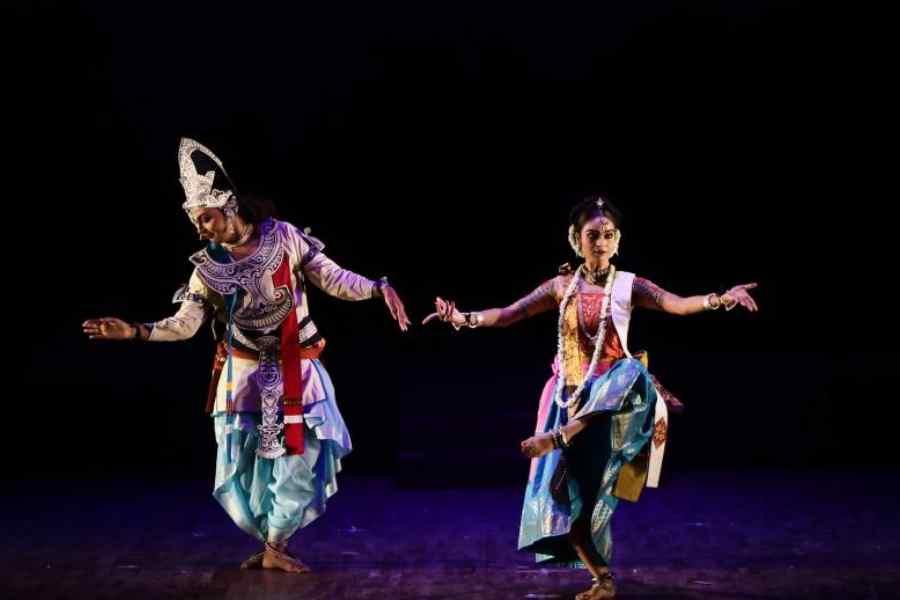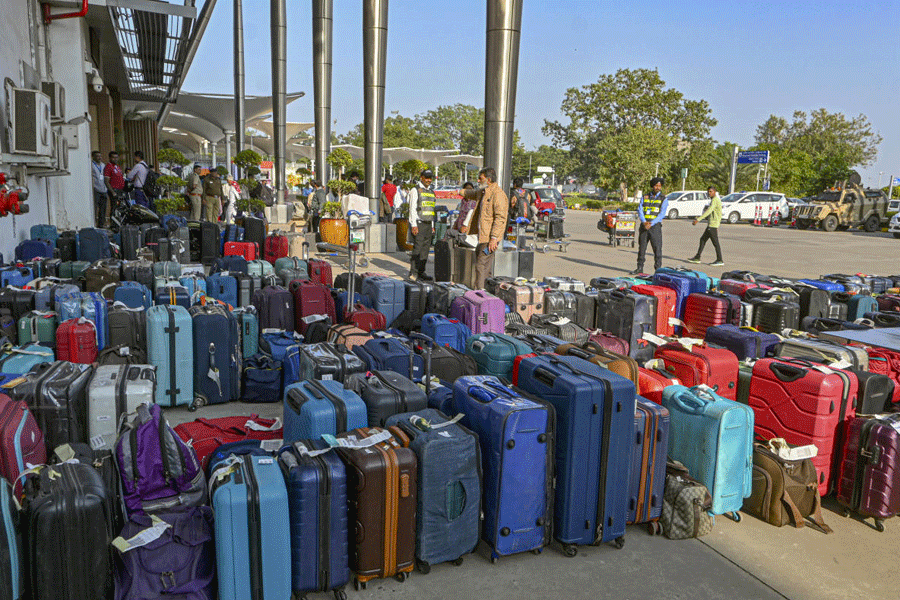Based on the complex themes of identity and self-acceptance, questioning the binaries of masculinity and femininity and exploring the in-between spaces while examining the ideas of love, illusion, equality, respect, beauty and truth, Rabindranath Tagore’s Chitrangada continues to hit hard with the power of its text, politics and dramaturgy. More than 133 years since its creation, this dance drama, which plays with the tropes of transformation and the social construct of gender with weighty feminist and philosophical overtones, remains relevant and offers great scope for interpretation and experiment. This masterpiece of compressed storytelling addresses social and psychological issues that continue to be real, making it more relatable than ever.
With this context, Sruti Performing Troupe’s recent staging of the work at Madhusudan Mancha had no extraordinary ambitions of probing into the text to look for fresh perspectives. It chose to be an aesthetic vehicle for the embodied expression of the emotional experiences that Chitrangada revolves around.
Under Tagore’s supervision, a flexible and mixed dance style had emerged from a cross-cultural exploration of movement techniques — Manipuri, Kathakali, Bharatanatyam along with folk forms to which the traditional South Asian dance styles of Java and Sri Lanka lent their meditative articulation — and become very popular in Bengal. The choreographer, Sruti Bandopadhyay, drew upon its vocabulary to create this piece. It was the execution of the dance, the synchronicity and the precision of the movements that the dancers displayed and the pleasure they took in it that held the piece together. The dancers’ fluid movements were a sort of responding-to-the-songs-through-the-body in a representational narrative.
The aesthetic costumes and subtle colours heavily referenced the sumptuous productions of dance dramas from Tagore’s times and contributed rich textures to the storytelling. Somnath Sinha’s scenography, too, worked towards creating an atmosphere. A fine appreciation of the dramatic power of the piece shone through the choreography. One wishes, however, that women did not play the male roles in a 2025 adaptation of the Tagore masterpiece. It is most definitely passé.










